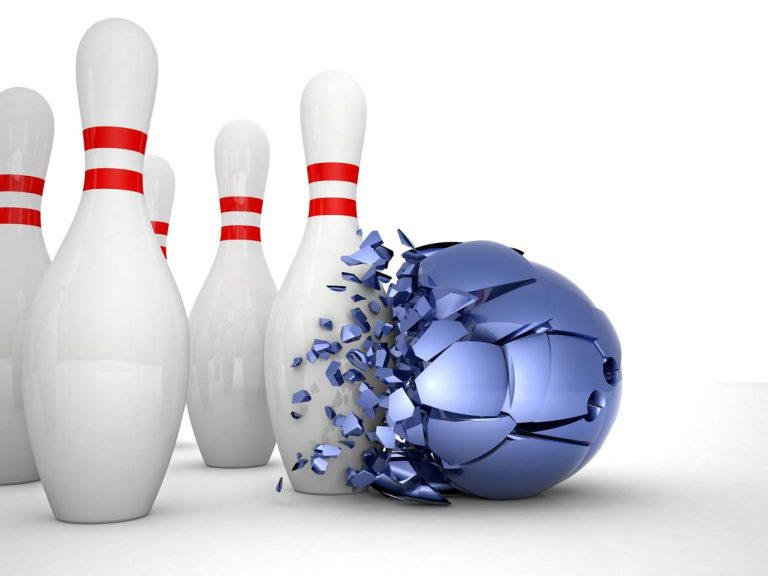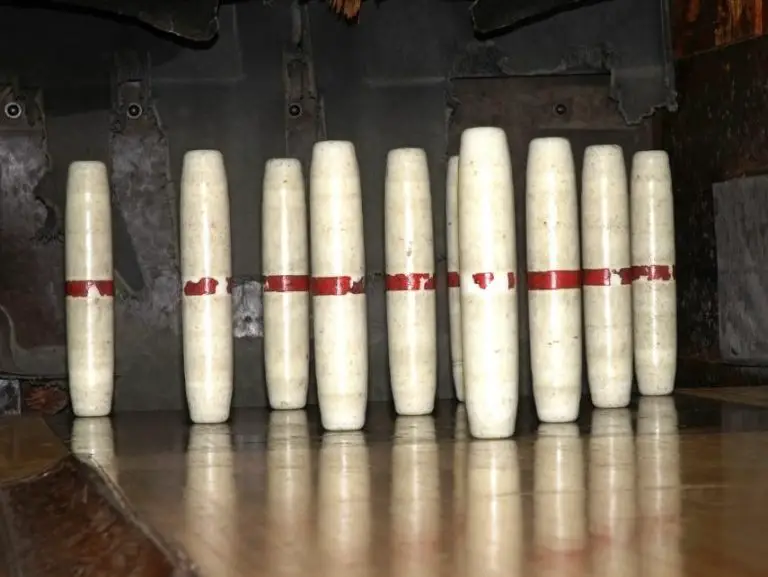What Are Duckpin Bowling Balls Made Of?
Duckpin bowling is a unique sport that originated in the United States. Unlike traditional ten-pin bowling, duckpin bowling uses smaller balls and shorter, squatter pins. The smaller size of the balls used in duckpin bowling makes them easier to handle, but it also means that they are made of different materials than the larger balls used in traditional bowling.
If you’re curious about what duckpin bowling balls are made of, you’ve come to the right place. Duckpin bowling balls are typically made of a combination of rubber and plastic, which makes them more durable than traditional bowling balls. The rubber helps the ball grip the lane, while the plastic provides a smooth surface for the ball to roll on.
While the composition of duckpin bowling balls is similar to that of traditional bowling balls, there are some key differences. Duckpin bowling balls are smaller and lighter, which means that they require less force to roll down the lane. Additionally, the lack of finger holes means that the balls must be thrown with a different technique than traditional bowling balls.

History and Evolution of Duckpin Bowling
Duckpin bowling is a variation of ten-pin bowling that originated in the Northeastern United States around 1900. It is played with smaller balls and pins, making it more challenging than traditional bowling. This section will explore the origins and evolution of duckpin bowling.
Origins and Founders
Duckpin bowling was invented by two baseball players, Wilbert Robinson and John McGraw, who played for the Baltimore Orioles. They wanted to create a game that was more challenging than traditional bowling, so they came up with the idea of using smaller balls and pins. The game quickly caught on in the Baltimore area and soon spread to other parts of the Northeastern United States.
Popularity and Growth
The game’s popularity continued to grow, and in 1927, the National Duckpin Bowling Congress was formed to establish rules and regulations for the game. Duckpin bowling became a popular pastime in the Northeastern United States, and many bowling alleys were built to accommodate the growing demand.
Over the years, the equipment used in duckpin bowling has evolved. In the early days, the balls were made of wood and the pins were made of hard rubber. Today, the balls are made of a composite material that is more durable and provides better grip, while the pins are made of a softer rubber that makes them easier to knock down.
In conclusion, duckpin bowling has a rich history that dates back over a century. It was invented by two baseball players who wanted to create a more challenging version of traditional bowling, and it quickly became popular in the Northeastern United States. The game has evolved over the years, and today, it is played with more durable equipment that makes it more enjoyable for players of all skill levels.
Duckpin Bowling Ball Composition
If you’re curious about what duckpin bowling balls are made of, you’ve come to the right place. In this section, we’ll explore the materials that make up a duckpin bowling ball, as well as the size and weight specifications that are required for this unique sport.
Core Materials
The core of a duckpin bowling ball is typically made of a dense material, such as lignum vitae, hard rubber, or a hard rubber band. These materials provide the ball with weight and stability, allowing it to roll smoothly down the lane. Some modern duckpin bowling balls may have a plastic or polyester core instead, which can provide additional durability and consistency.
Outer Materials
The outer surface of a duckpin bowling ball is typically made of rubber, which provides a good grip on the lane and helps to absorb impact. Some duckpin bowling balls may also be made of other materials, such as plastic or urethane, which can provide different levels of grip and durability. Regardless of the outer material, duckpin bowling balls are designed to be smooth and free of any bumps or irregularities that could affect their trajectory.
Size and Weight Specifications
Duckpin bowling balls are smaller and lighter than traditional ten-pin bowling balls. According to Wikipedia, duckpin balls are typically 5 inches in diameter and weigh between 3 pounds 6 ounces and 3 pounds 12 ounces. Unlike ten-pin bowling balls, duckpin bowling balls do not have finger holes, which can make them more challenging to grip and control. However, this also allows for a wider range of throwing techniques and styles, making duckpin bowling a unique and exciting sport.
In summary, duckpin bowling balls are typically made of a dense core material, such as lignum vitae or hard rubber, and covered in a layer of rubber or other material for grip and durability. They are smaller and lighter than traditional ten-pin bowling balls, and do not have finger holes. These size and weight specifications, along with the unique composition of the ball, make duckpin bowling a challenging and rewarding sport for players of all skill levels.
Rules and Scoring in Duckpin Bowling
Gameplay Mechanics
Duckpin bowling is played with smaller balls than traditional ten-pin bowling, with 10 stocky pins, and different rules. The game is played in frames, with each player getting three rolls per frame to try and knock down as many pins as possible. The pins are set up in a triangular formation, with the front pin being worth 1 point, the middle pins worth 2 points, and the back pins worth 3 points.
Scoring System
Scoring in duckpin bowling is similar to traditional ten-pin bowling, but with a few differences. In duckpin bowling, a strike is when all ten pins are knocked down in one roll. The symbol for a strike is “X.” Spares in duckpin bowling are earned with your second roll. If 2 pins are knocked down with the first roll, 8 pins remain in the frame. You knock down the remaining 8 pins with your second ball, earning yourself 10 points for the spare. A gutter ball is when the ball rolls into the gutter without knocking down any pins. A gutter ball scores zero points.
The game consists of 10 frames, with each frame consisting of three rolls. The maximum score for a single frame is 30 points, which is achieved by rolling three strikes in a row. The maximum score for a full game is 300 points, which is achieved by rolling 12 strikes in a row.
In conclusion, duckpin bowling is a fun and challenging game that requires skill and precision. The rules and scoring system are similar to traditional ten-pin bowling, but with a few differences. Understanding the gameplay mechanics and scoring system is essential for success in the game.
Duckpin Bowling Equipment and Alleys
Duckpin bowling is a variation of ten-pin bowling that uses smaller balls and pins. The equipment used in duckpin bowling is different from that used in ten-pin bowling. In this section, we will discuss the equipment used in duckpin bowling and the features of the bowling alleys.
Variations in Equipment
The bowling balls used in duckpin bowling are between 4 3/4 inches (12 cm) and 5 inches (12.7 cm) in diameter and weigh between 3 pounds 6 ounces (1.5 kg) and 3 pounds 12 ounces (1.7 kg). Unlike ten-pin bowling balls, duckpin bowling balls do not have finger holes. They are slightly larger and heavier than those used in candlepin bowling [1].
The pins used in duckpin bowling are smaller and squatter than those used in ten-pin bowling. They are about 9 3/8 inches (23.8 cm) tall and 4 1/2 inches (11.4 cm) wide at their widest point. The pins are arranged in a triangular formation, with the head pin at the front [1].
Bowling Alley Features
Duckpin bowling alleys are smaller than ten-pin bowling alleys. The lanes are usually 60 feet (18.3 m) long and 11 inches (27.9 cm) wide. The gutters on either side of the lane are only 9 1/2 inches (24.1 cm) wide, compared to 12 inches (30.5 cm) in ten-pin bowling. The smaller gutters make it more difficult for the ball to stay in play, adding an extra level of challenge to the game [2].
The lane conditions in duckpin bowling are also different from those in ten-pin bowling. Duckpin bowling lanes are not oiled, so the balls do not have as much traction as they do in ten-pin bowling. This makes it more difficult to control the ball’s path down the lane [3].
In conclusion, duckpin bowling equipment and alleys have several unique features that set them apart from ten-pin bowling. The smaller balls and pins, smaller gutters, and different lane conditions all add an extra level of challenge to the game.




